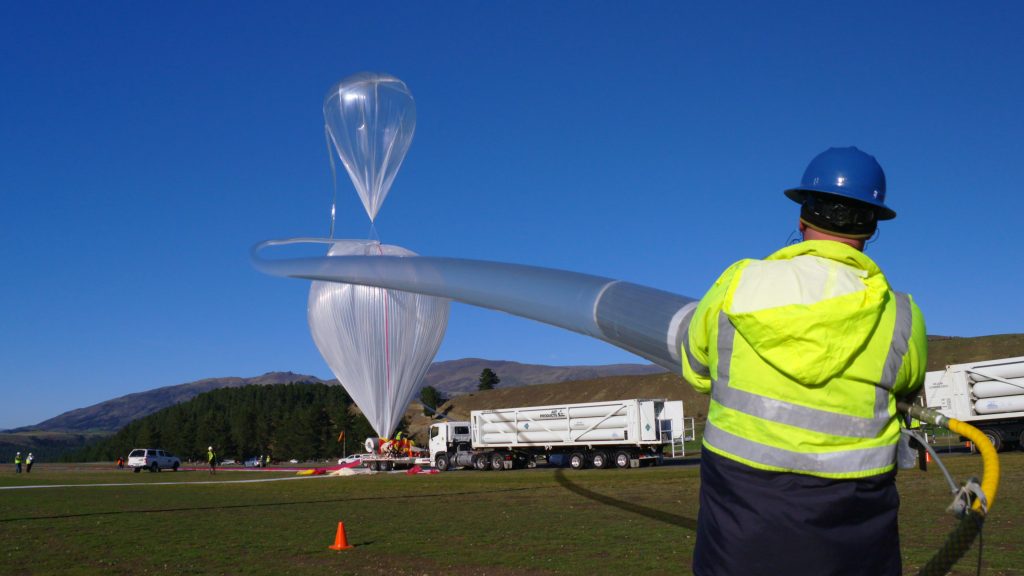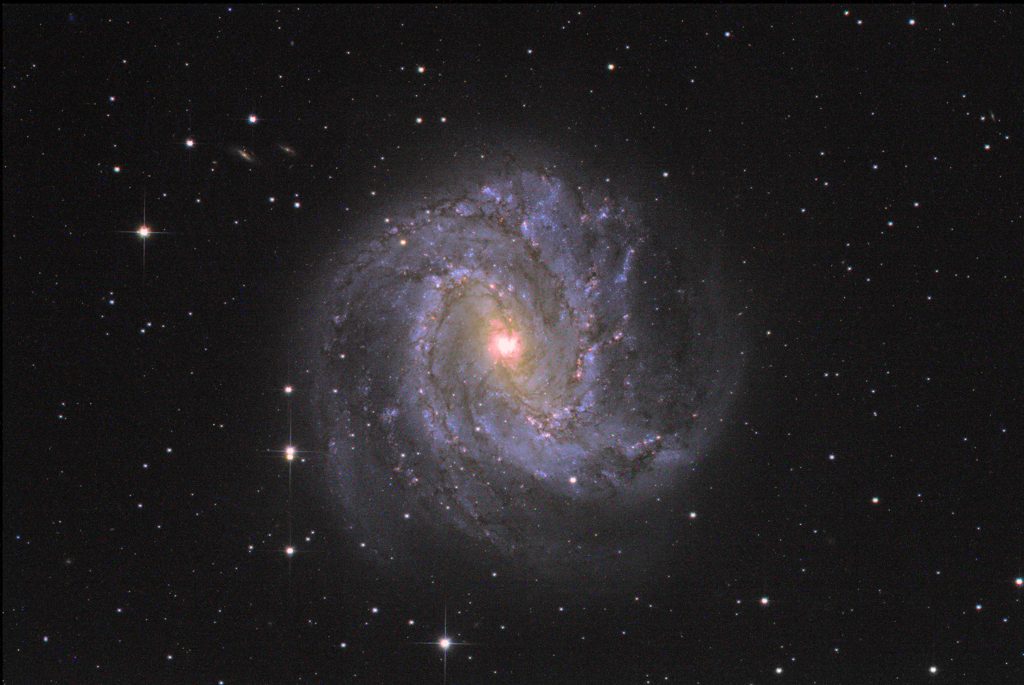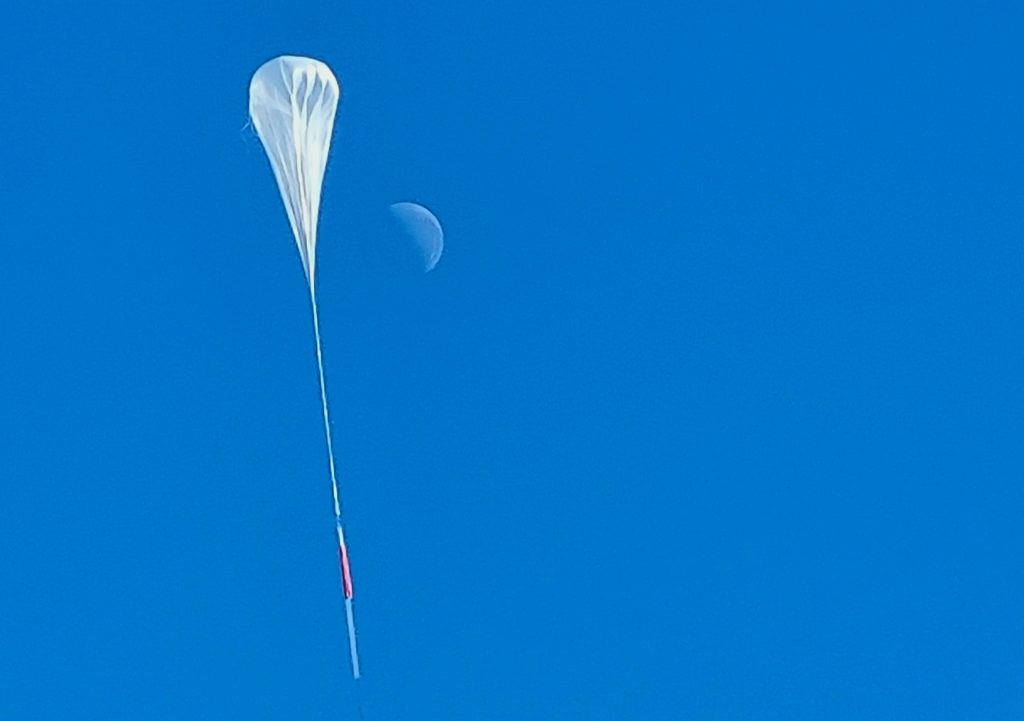Up, up and away with NASA’s beautiful balloon.
It’s ANZAC Day, 2017. I’m parked on the side of Kane Road, peering across a paddock strewn with pivot irrigators and over the Clutha River to the Wānaka Airport. There, a balloon shaped like an inverted teardrop is slowly filling with helium, cubic inch by cubic inch. Ant-sized vehicles buzz about at its base. Behind me, some parents on a picnic blanket play “I spy” with their children to keep boredom at bay. Eventually, the guy wires holding the array to the ground start to wobble. Something is up.

The teardrop is the precursor to something far, far bigger: a NASA Super Pressure Balloon (SPB). The size of a football stadium when fully inflated, the 70-metre high SPB is part of a suborbital space flight program run by NASA to support space and earth sciences research. Basically, the balloons are designed to get scientific equipment up really high, without the time, expense and risk of a rocket launch. Or, as CBS News called it, “science on the cheap.”
The launch is both sudden and subtle. The balloon shudders, then begins to float upwards as a strip of white fabric unfurls below it, which goes taut as it tugs its payload aloft. It may be a Super Pressure Balloon, but to be honest, from the ground it isn’t super impressive. It looks like a giant gossamer tadpole, or a bouncy castle having a very bad day. It is small against the mountains and the sky. But then again, so is the moon. Anyhow, I’m rapt. NASA is in my backyard, and I’m here for it.

PHOTO: NASA/Bill Rodman
Reaching for the stratosphere
The 2017 launch had two purposes. One was to test the viability of SPB technology for long duration missions at mid-latitudes. The balloons, made of about 12 hectares of sandwich-wrap-thin polyethylene film, are designed for stable flight at near-space altitudes. Stability is key if you want long duration. The internal pressure of the oval-shaped SPB adjusts as day turns to night turns to day, keeping it at a constant altitude of about 33 kilometres, above more than 99 percent of the Earth’s atmosphere.
Fun fact: the only plane that could theoretically get close to a SPB in flight would be the iconic Lockheed SR-71 Blackbird, a long-range, high-altitude strategic reconnaissance aircraft that could reach altitudes of at least 16 miles. Word is the experimental Darkstar plane tested by Tom Cruise’s Captain Pete Mitchell in Maverick was based on the SR-71, or, even better, its mythical successor, the SR-72, which may or may not be a real thing.
NASA has used balloons to conduct scientific studies for more than three decades; balloon science instruments confirmed the inflation model of the universe’s expansion. As well as SPBs, NASA also still deploys the more traditional Zero Pressure (ZP) balloons. Little changed since the fifties, the ZP balloons have to vent helium during the day and drop ballast at night to maintain altitude, both of which gradually run out, making them only useful for short-duration flights. A SPB, in contrast, could theoretically stay aloft for a year.
One benefit of this is a very low-cost platform for sustained near space observations – it’ll cost you about $200 million to get your instruments on a rocket, versus $35 million for a balloon ride. One University of Arizona astronomy professor referred to the SPB as a “poor man’s launch vehicle”. That’s where the payload comes in. The second purpose of the 2017 mission was to carry the Extreme Universe Space Observatory (EUSO) into the stratosphere, which sounds like something The Avengers would either deploy or try to shoot down, but is in fact a rig used to study cosmic-ray particles as they penetrate our atmosphere. Which also sounds like something that might concern The Avengers.
SPBs have carried all manner of scientific payloads over the years, including a version of the Mars Rover, a gamma-ray telescope and the awesomely-named MARSBOx, the Microbes in Atmosphere for Radiation, Survival and Biological Outcomes Experiment. MARSBOx carried a range of microorganisms and exposed them to the harsh environment of space. The goal was to see what survived, and therefore what we might unintentionally piggyback to off-world destinations. (One answer is the Aspergillus niger fungus, which scientists think is harmless, but isn’t that what they said when cane toads first got loose in Australia?). As balloon program Chief Technologist Sarah Roth explained at a public talk in Wānaka, the only constraint for a payload is that it “has to fit through the hangar doors”. No, they can’t take people. Sorry.

Space exploration rocks
Like war, sports and American Idol, space exploration brings out the best of us and the worst of us at the same time. In the worst column, it can be a sausage fest. See Jeff Bezos riding a colossal phallus to the edge of space in 2021, just far enough up to surpass the height reached by Richard Branson a week earlier. It is also arguably a drain on resources in difficult times. For an enlightening perspective on this, look up Gil Scott-Heron’s 1970 release ‘Whitey On the Moon’’: “I can’t pay no doctor bill (but Whitey’s on the moon) / Ten years from now I’ll be payin’ still (while Whitey’s on the moon)”.
Then again, endeavours like the moon landing do have a habit of concentrating effort in a way that fosters successes which benefit us all. Scientific breakthroughs that have resulted from the space race include CAT scans, the computer mouse, baby formula and the insulin pump. Also, the way things are going down here, we should probably have a look around up there, impending planetary meltdown and all.
Most of all, though, space exploration is existentially cool, the pinnacle of human ingenuity, curiosity and teamwork. When I’m having a bad day, I fire up YouTube and rewatch the “eagle has landed” scene from First Man, in which Ryan Gosling plays Neil Armstrong. Everything is gloriously old tech. The moon lander looks like it was made out of Meccano by an eight-year-old. It sounds like the 1958 Volkswagen Beetle I had in high school. They’re running out of fuel. The computer keeps glitching. Gosling/Armstrong takes manual control in the face of certain death and calmly puts that shit down just past a crater that would have swallowed them whole. It’s freakin’ incredible. Then again, I once downloaded the entire transcript of the Air-to-Ground Voice Transmission from the Apollo 11 mission. That’s eight days’ (195 hours, 18 minutes and 35 seconds actually) worth of Neil Armstrong and his team conversing with Houston. I will probably die alone.
Launches and landings
The NASA Balloon Program first came to Wānaka in 2015. Managed by NASA’s Wallops Flight Facility in Virginia, the program launches 10 to 15 flights each year from sites around the world, including Fort Sumner in New Mexico, the Swedish town of Kiruna and Antarctica’s McMurdo Station. Like those other locations, Wānaka has the right combination of favourable wind conditions, low population density, and controllable air and ground traffic. The balloon team was fresh off a successful 2014-2015 season in Antarctica, and they were looking to make history by flying a SPB for more than 100 days; the record at the time for a large scientific balloon was 55 days, 1 hour and 34 minutes. They got the mission away, but after 32 days the balloon started to leak. It was brought down in a “controlled” crash landing over Australia, where it came to rest on a dingo fence. A second Wānaka balloon, launched in 2016, made it all the way around the world, plus a tad more, getting as far as Peru.
Once aloft, as Sarah put it, the balloon is “at the mercy of the stratospheric winds”. There’s no steering a SPB. If the balloon has a technical issue, or starts to drift too far north, where there are highly populated areas, the team will separate it from its payload, which is then parachuted down over a landmass where it can be recovered. This is not always easy. In the 2015 case, NASA had to build a road through the outback to get to the crash site.
If it all goes wrong over water, the two-tonne payload stays attached and serves as an anchor, which drags the whole array straight to the bottom of the sea, hopefully minimising the impact on marine life. This is what happened to the 2017 mission, which was damaged at launch due to an electronics problem. After just 12 days, the balloon, Extreme Universe Space Observatory and all, was sent to the ocean floor.
Sometimes, there isn’t even a launch. Covid caused a long hiatus; a planned mission in 2022 never got off the ground because of technical issues; and the 2019 balloon was cancelled due to a 35-day government shutdown in the United States, caused by President Donald Trump’s demands for more funding for his stupid Mexican border wall. Another reminder the world is as small as it is big.

PHOTO: Laura Williamson
Six years gone
NASA successfully launched two balloons from the Wānaka Airport this year. I caught the second one, not on purpose, but because I was driving home at the right time. I live by the airport, and I saw the big teardrop in the distance. It was nerd catnip. I pulled over.
It’s been six years since the last time I was in this exact place, watching this same event. Things have happened since then. Children have become adults. Our town has grown bigger. The world shut down for a while. But the feeling is the same.
The morning is getting late, but a translucent half-moon lingers in the blue sky as I think about the modest perfection of this technology, simple fabric filled with simple gas, something Jules Verne could have written about. When it lets go, there is no fire, no circle of scorched earth. Nothing but a sigh. Later, my mum texts me from Canada to tell me she saw the roof of my house on NASA’s livestream. I am part of the history of space exploration. I am launched.
LAURA WILLIAMSON

